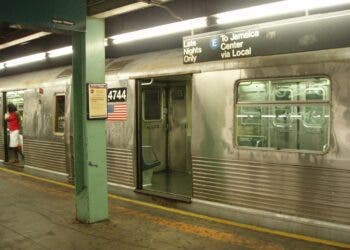What do a tomato plant and the NY subway system have in common? A lot more than you’d think.

When I first started studying roots (tree roots), the number of misconceptions I had was almost embarrassing. Like most people, I had an overly simplistic view of root systems, unaware of the staggering complexity these systems often exhibit. Researchers from the Salk Institute wanted to learn more about this complexity and started comparing root systems to something unexpected: subway systems.
As of October 2014, 157 cities in 55 countries around the world host some form of fast transit — subways. Each and every such system was instrumental in easing traffic, and they just do a great job at connecting different points in a city quickly and cheaply.
“The idea for this work really started with an engineering question,” says Saket Navlakha, assistant professor in Salk’s Center for Integrative Biology and senior author of the paper. “How do transportation networks like a subway system or an electric grid resolve the tension between two competing objectives, such as cost and performance? And do plants resolve similar competing objectives in the same way?”
If you think about it, cities want to have subways that branch out to the densely-populated areas, but they want to build them as cheap as possible. Similarly, roots tend to reach out to areas rich in water or nutrients, but they don’t want to expend much energy in the process. They balance this out naturally, by channeling grow patterns. Engineers balance this out by reducing costs and connecting only the “must” areas.
Extending the analogy, subways generally focus on transporting people from residential areas to working areas, like plants focus on transporting water and nutrients from the root to the leaves. Moving on with this framework, researchers defined the plant cost as the total length of the branches, because it takes energy and resources for the plant to grow them. They defined performance as the sum of distances from the plant’s base to each leaf because this represents how far nutrients (water and sugars) have to travel between the root and leaves. Both these aspects are thoroughly evaluated in human constructions.
They focused on three commercial plants: tomato, tobacco, and sorghum. They grew the plants from seeds, mimicking conditions they would encounter in a natural environment, including seasonal variations such as drought or share.
Then, they painstakingly took 3D laser scans of the plants. It took them 20 days for this alone, they took about 500 scans in total.
“Scanning plants in three dimensions can be fairly time consuming,” says Adam Conn, a Salk research assistant and the paper’s first author. “But it’s non-invasive, and once you’ve done it you can discover things from the data that you couldn’t learn by just looking at the plants.”
But at the end of it all, conclusions started to emerge. Researchers charted the coordinates they obtained from the laser scans. They then compared these with theoretical plants built just from “performance” and “cost” — they fit almost perfectly. This seems to indicate that plants develop their structure just like engineers develop subway systems, focusing on costs and performance.
“Our hypothesis was that if total length and travel distance were important evolutionary criteria for plants, there would be evolutionary pressure to minimize the criteria together, and that’s actually what we found,” says Ullas Pedmale, who was a postdoctoral researcher on the project and is now an assistant professor at Cold Spring Harbor Laboratory.
Similar trends were observed across all species, though different species tended to opt for different tradeoffs — but the tradeoffs were consistent among species. In other words, tomatoes all do a kind of tradeoffs, while all tobacco plants opted for a slightly different strategy.
This means the way plants grow their architectures also optimizes a very common network design tradeoff. Based on the environment and the species, the plant is selecting different ways to make tradeoffs for those particular environmental conditions,” says Navlakha. “By understanding these tradeoffs we may be able to dynamically tune our crop varieties to a changing climate.”
It’s yet another hint that often times, modern engineering takes a cue from nature, even though we might not realize it.
Journal Reference: Adam Conn, Ullas V. Pedmale, Joanne Chory, Saket Navlakha. High-Resolution Laser Scanning Reveals Plant Architectures that Reflect Universal Network Design Principles. Cell Systems, 2017; 5 (1): 53 DOI: 10.1016/j.cels.2017.06.017





